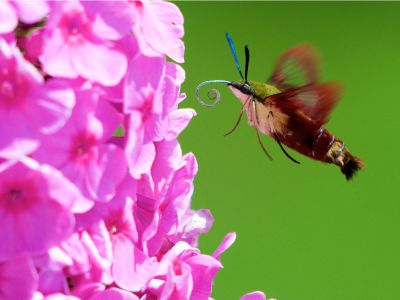With so much beauty, it is easy to understand why we become avid observers of our flying garden visitors. Among these unique creatures is the hummingbird moth, who most frequently gains attention once sighted bouncing about the flower beds.
What is a Hummingbird Moth?
Hummingbird moth facts can be somewhat confusing when using common names. Generally, there are several types of moth belonging to the Hemaris genus, many of which display a flight habit quick and consistent with that of a hummingbird. However, the most common moths referred to by gardeners are the hummingbird clearwing and snowberry clearwing. These daytime feeders are frequently sighted whilst consuming nectar in flower beds and ornamental plantings. Like other members of the genus, clearwing hummingbird moth pollinators are able to quickly fly around the garden. This often leads to the bewilderment of gardeners, as the moths are quite a bit smaller than their feathered counterparts. Without careful attention to one’s surroundings, hummingbird moths are often overlooked, as they greatly resemble bumblebees at first glance.
How to Attract Hummingbird Moths
In learning about hummingbird moths and how to attract them, one must consider specific plant types. Like most moths, hummingbird moth pollinators use their long mouth parts to feed on nectar. For this reason, hummingbird moth facts suggest that these insects actually prefer flowers with long trumpet-shaped blooms. Those learning how to attract hummingbird moths will also need to consider bloom period when planning flower beds or containers. Ideally, the bloom period should be extended throughout the entire growing season. This can be achieved through succession planting and through the incorporation of both annual and perennial flowering plants. While it is only natural to want to learn more specifically about hummingbird moths, it will be important to remember that other pollinators will come to appreciate your efforts to attract them as well. Native wild plants may be beneficial in this endeavor, but should be planted with caution, as some species may be invasive. Before planting, always reference local laws and regulations.
Popular Plants for Hummingbird Moth Pollinators
Bee BalmButterfly BushEchinacea (purple coneflower)HoneysuckleLantanaLiatrisLilacMorning GloryPetuniaVerbenaZinnias
With minimal planning and maintenance, you can create a thriving garden ecosystem that is enjoyable to all.
